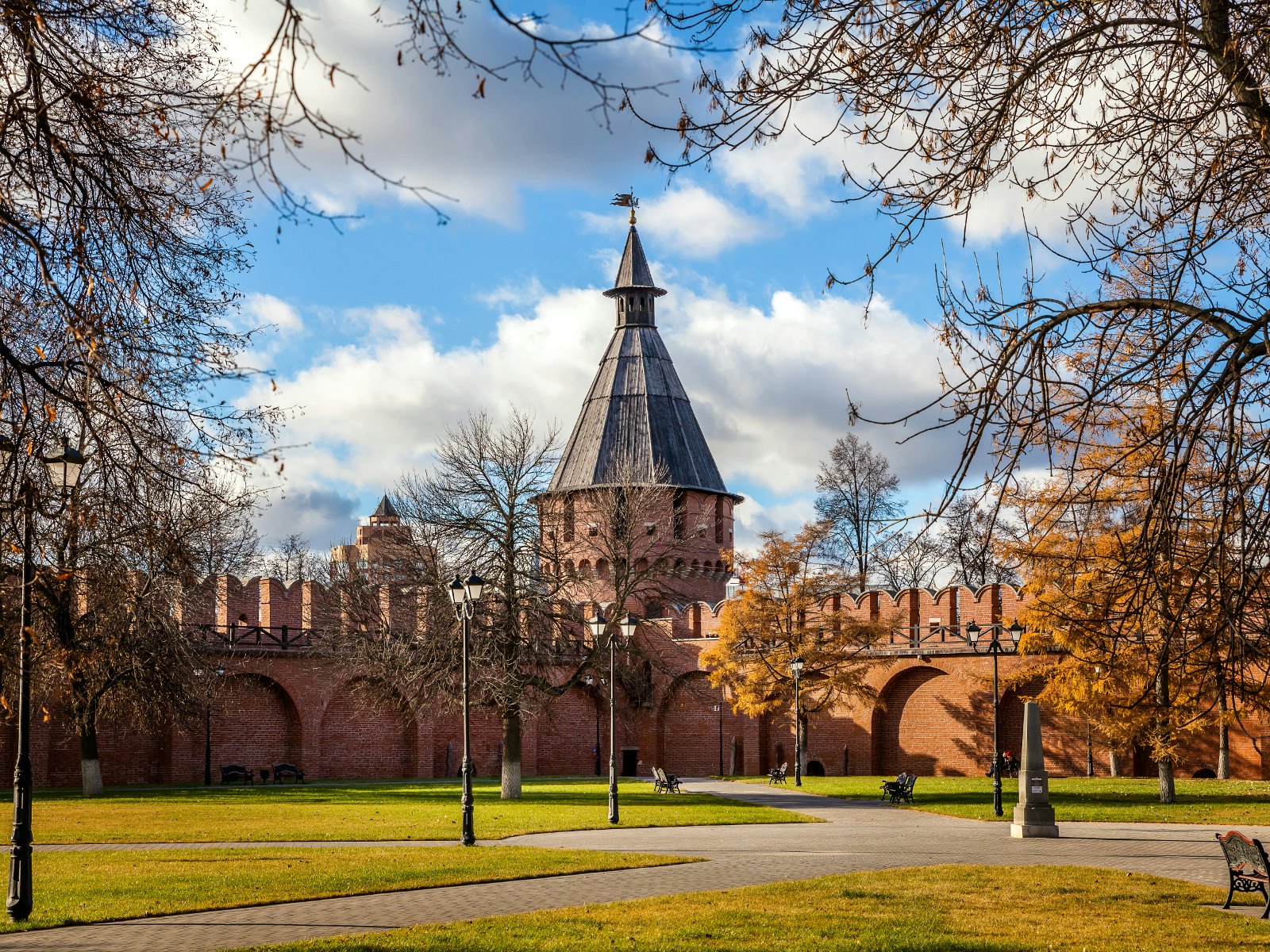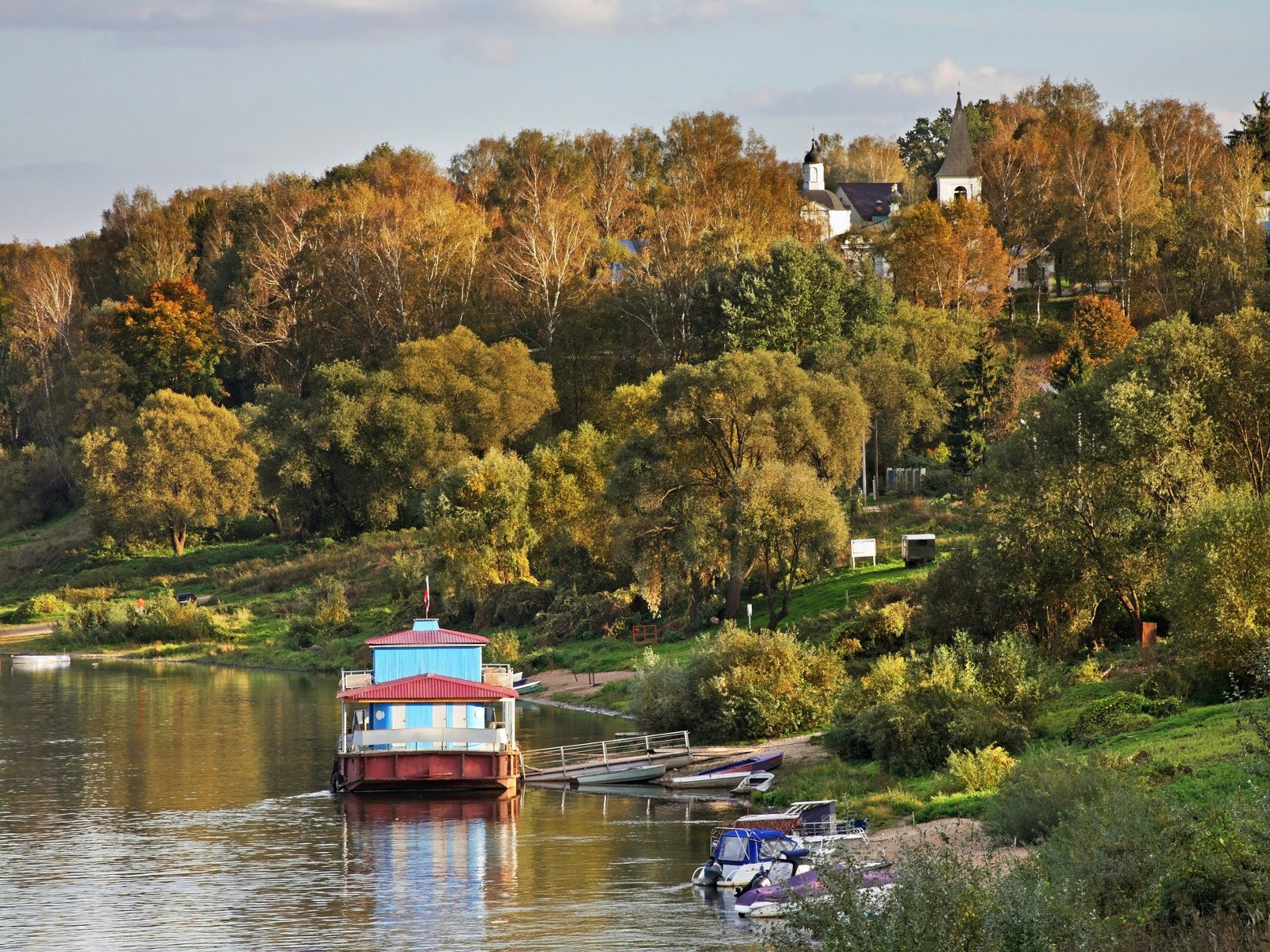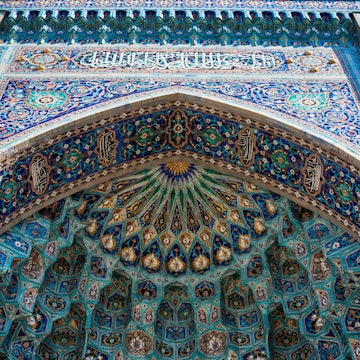

The city of Tula with its landmark 16th-century kremlin makes for a great day trip from Moscow © Soloviev Andrey / Shutterstock
Moscow has enough attractions to keep any traveller busy for a couple of weeks, but it would be a shame not to get out of the city and explore its environs, if only for a day. Whether you travel by car or public transport, you can explore a mix of quirky museums, artistic retreats, medieval fortresses and 19th-century architecture in bucolic surroundings.

Tula and Yasnaya Polyana
The home to one of the best-preserved medieval fortresses in Russia, Tula makes a perfect destination for a day trip. The city itself was founded in the latter half of the 14th century, but its famous landmark – a red-brick fortress or ‘kremlin’ – was built in the early 16th century to defend Russia against the Tatars. You can take a tour of the recently renovated kremlin walls or visit one of its small museums devoted to local specialities like pryanik (gingerbread) or the samovar. Right outside the kremlin walls is the new Kazanskaya embankment, designed by the Wowhaus architecture firm.
Tula has much more to offer: the Oktava creative cluster at the still-functioning eponymous microphone factory, with its Machine Tool Museum and contemporary art exhibitions; newly pedestrianised Metallistov St, lined with impressive 18th- and 19th-century merchant mansions; and the Fine Arts Museum with a decent collection of Russian avant-garde, including Kazimir Malevich and Wassily Kandinsky.
Just a short drive away is Yasnaya Polyana, the estate-museum of Russia’s most famous writer Leo Tolstoy. The museum tries to keep everything exactly as it was in 1910, the year of the writer’s death. Book ahead to visit the mansion where Tolstoy penned two of his best-known works, War and Peace and Anna Karenina.
Getting there: Catch a speed train to Tula from Moscow’s Kursk station (Kursky vokzal); the fastest ones take just under two hours. Yasnaya Polyana is a 20- to 30-minute taxi ride from the centre of Tula.

Tarusa and Polenovo
Nicknamed ‘the Russian Barbizon’, Tarusa has always attracted the creative intelligentsia. Founded in the 13th century as a defence fort on the Oka River, in the early 20th century the town became a popular dacha (summer cottage) destination for Muscovites. Tarusa is centred around the Cathedral Square; don’t miss its art gallery, famous for a collection of paintings by avant-garde artist Edward Steinberg. Another must-see is the Tsvetaev family house, where prominent 20th-century poet Marina Tsvetaeva used to spend a lot of time. Wander around the centre full of splendid 19th-century buildings, imagining yourself a character in one of Chekhov’s plays, and climb the hill to see the 17th-century Resurrection Church, Tarusa’s oldest building; just below is a chapel with a sacred spring.
The estate-museum of Polenovo is located on the opposite bank of the Oka River. Prominent artist Vasily Polenov spent a long time looking for a place to build his home and finally chose this spot to settle down with his family at the end of the 19th century. All the buildings on the estate were designed by Polenov himself, as well as the Holy Trinity Church in the nearby village of Bekhovo. The museum here has always been run by the artist’s descendants; there’s a great collection of paintings by Polenov himself, his friends and family members.
Getting there: Take a speed train from Kursk station to Serpukhov, from where you can catch a bus or taxi to Tarusa. To reach Polenovo in summer, get a speedboat across the river. In winter, go back to Serpukhov, take a Moscow–Tula train to Tarusskaya station and then catch a taxi.

Rostov-Veliky
It’s not clear when exactly Rostov-Veliky – often referred to as ‘the pearl in the Golden Ring’ – was founded, but it was probably as early as the 9th century. This city on the banks of Lake Nero played a significant role in Russian history, but today it’s a small town called Veliky (Great) – if only not to confuse it with its much larger namesake in the south, Rostov-on-Don.
The main attraction of Rostov is its magnificent kremlin, so called because it resembles a fortress even though its walls serve a purely decorative purpose. Built in the second half of the 17th century by a local metropolitan, today the kremlin is a museum with a large collection of icons and religious artefacts, as well as enamel miniatures (a local artistic speciality). Don’t miss the Church of Odigitria, built in the style of Moscow baroque, and the Assumption Cathedral, located right under the kremlin walls. There are 15 bells in its belfry, including Sysoy, one of the largest in Europe. Outside the kremlin walls, you’ll find several excellent restaurants and cafes serving traditional Russian cuisine.
The Spaso-Yakovlevsky Monastery is definitely worth the 15-minute walk from the kremlin. Founded in the turbulent 14th century, it’s surrounded by high stone walls with towers, which provide magnificent views of Lake Nero.
Getting there: From Moscow’s Yaroslav station (Yaroslavsky vokzal), board an express train to Yaroslavl and get off at Rostov-Veliky. The fastest trains take about two and a half hours.

Kolomna
Perhaps the most interesting small town in the Moscow region and another popular day-trip destination for Muscovites, Kolomna is full of cute little churches and 19th-century mansions in excellent condition. The famous 18th-century architect Matvey Kazakov, an expert of pseudo-Gothic style, worked on a number of buildings in Kolomna. There’s a well-preserved 16th-century kremlin with several intact towers and two monasteries within its walls.
A quirky museum, Artkommunalka is devoted to the life in a Soviet-era communal apartment, supposedly frequented by the legendary writer and dissident Venedikt Yerofeyev. The museum also has an interesting collection of contemporary art. If you’re not into art, local enthusiasts have revived two food specialities – pastila (similar to marshmallow) and kalach (a type of bread) – and opened two small museums devoted to each one. Theatrical performances take place here, and there are cafes where you can sample the products.
Getting there: Catch a train from Moscow’s Kazan station (Kazansky vokzal); the fastest one takes just under two hours.
https://shop.lonelyplanet.com/products/moscow-city-guide-7













